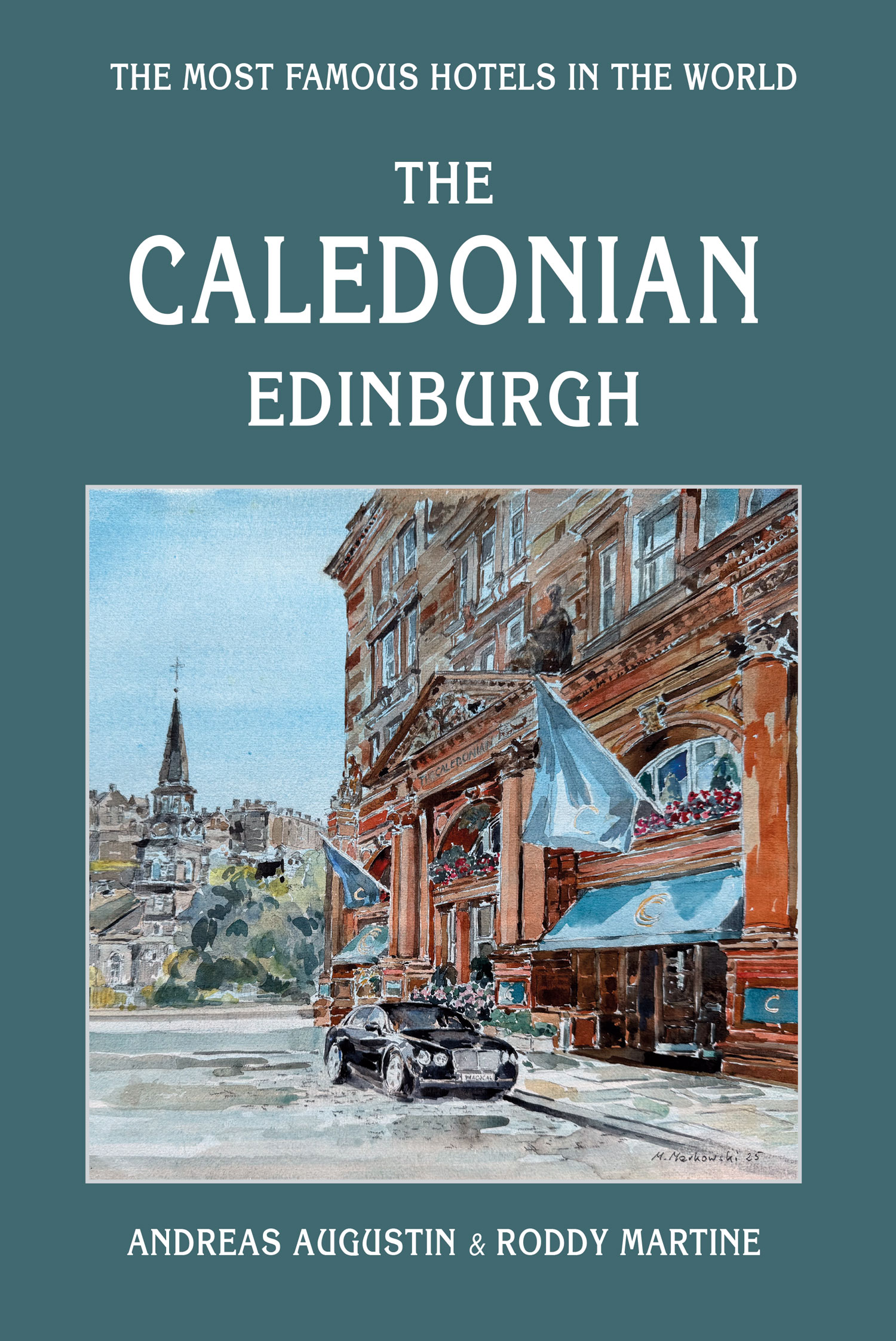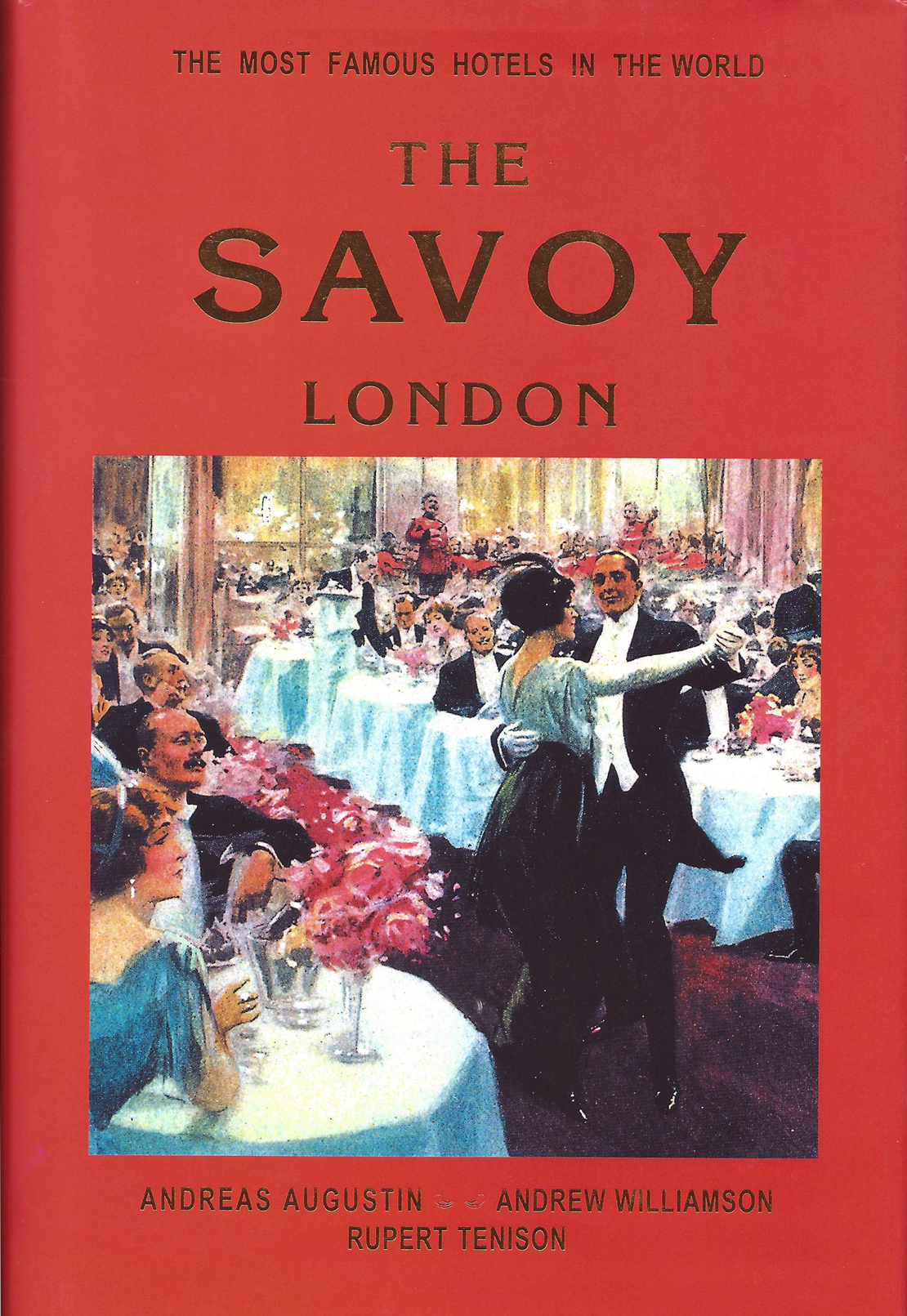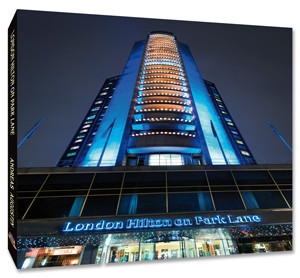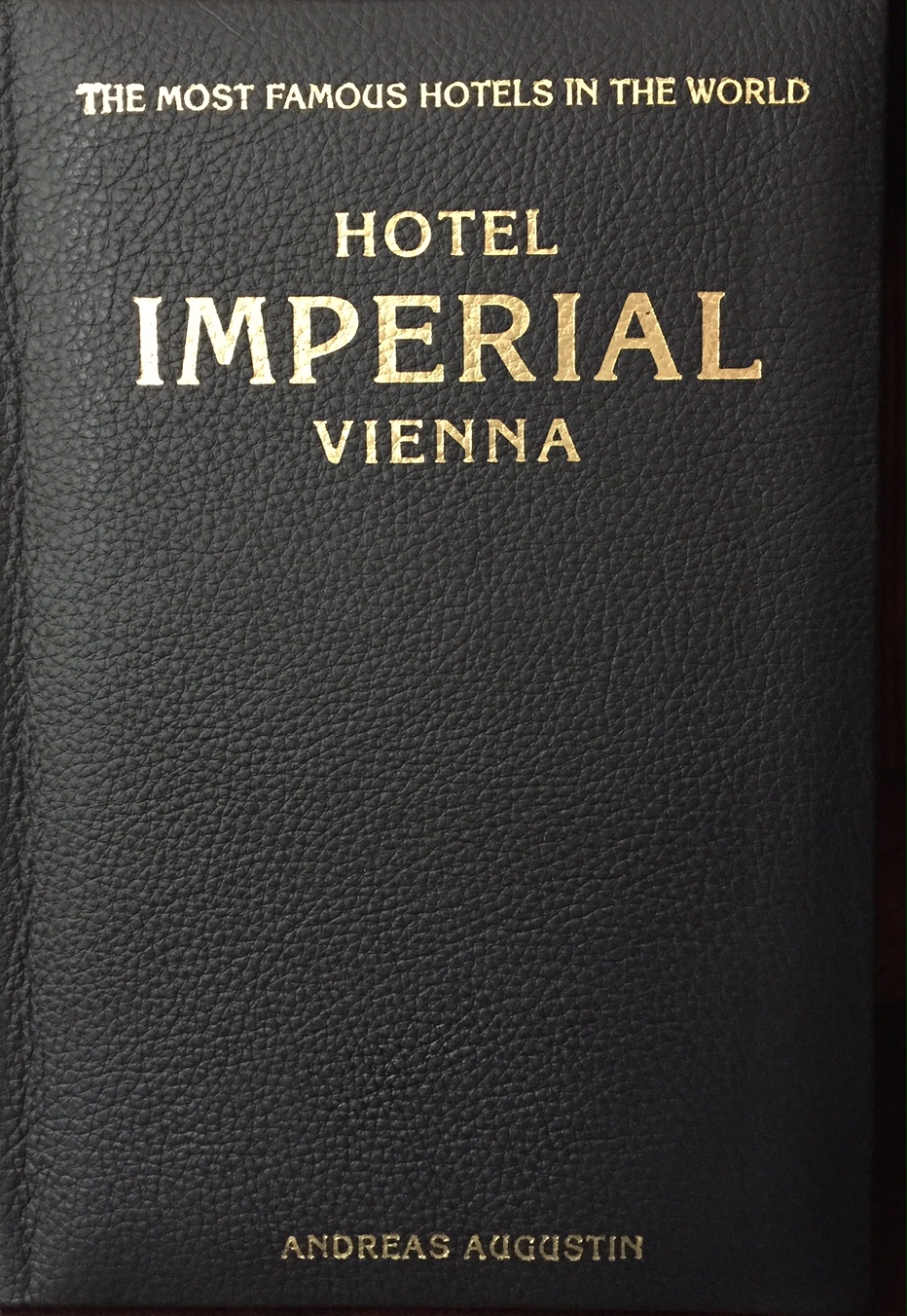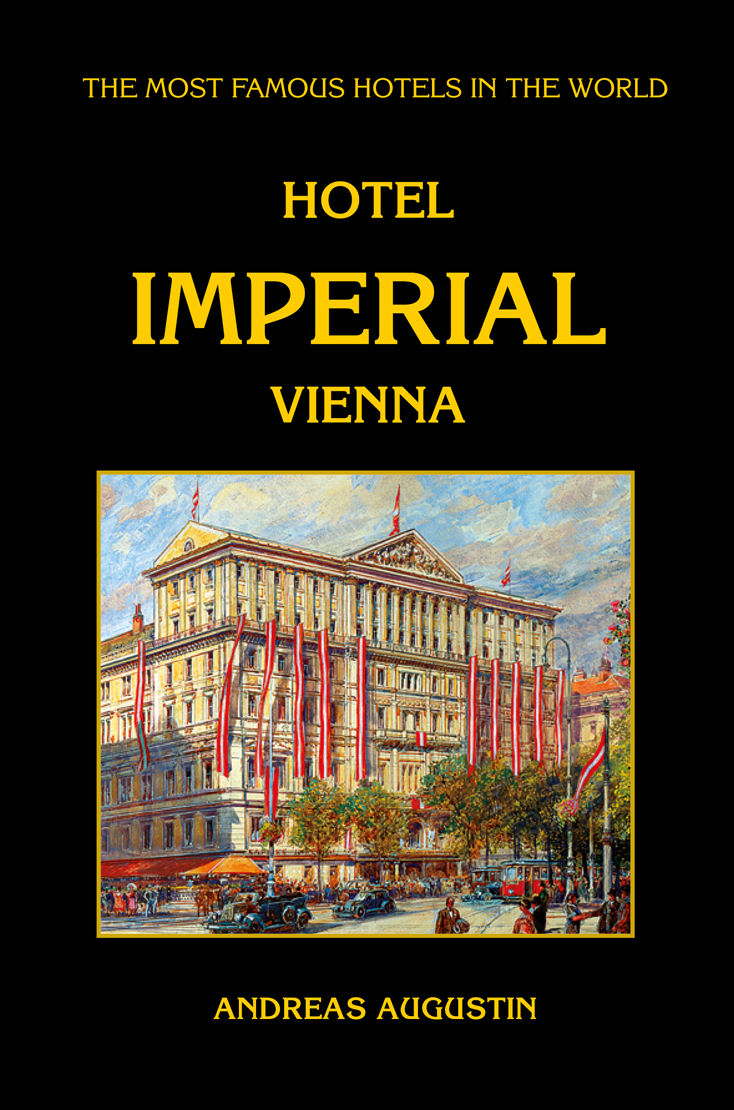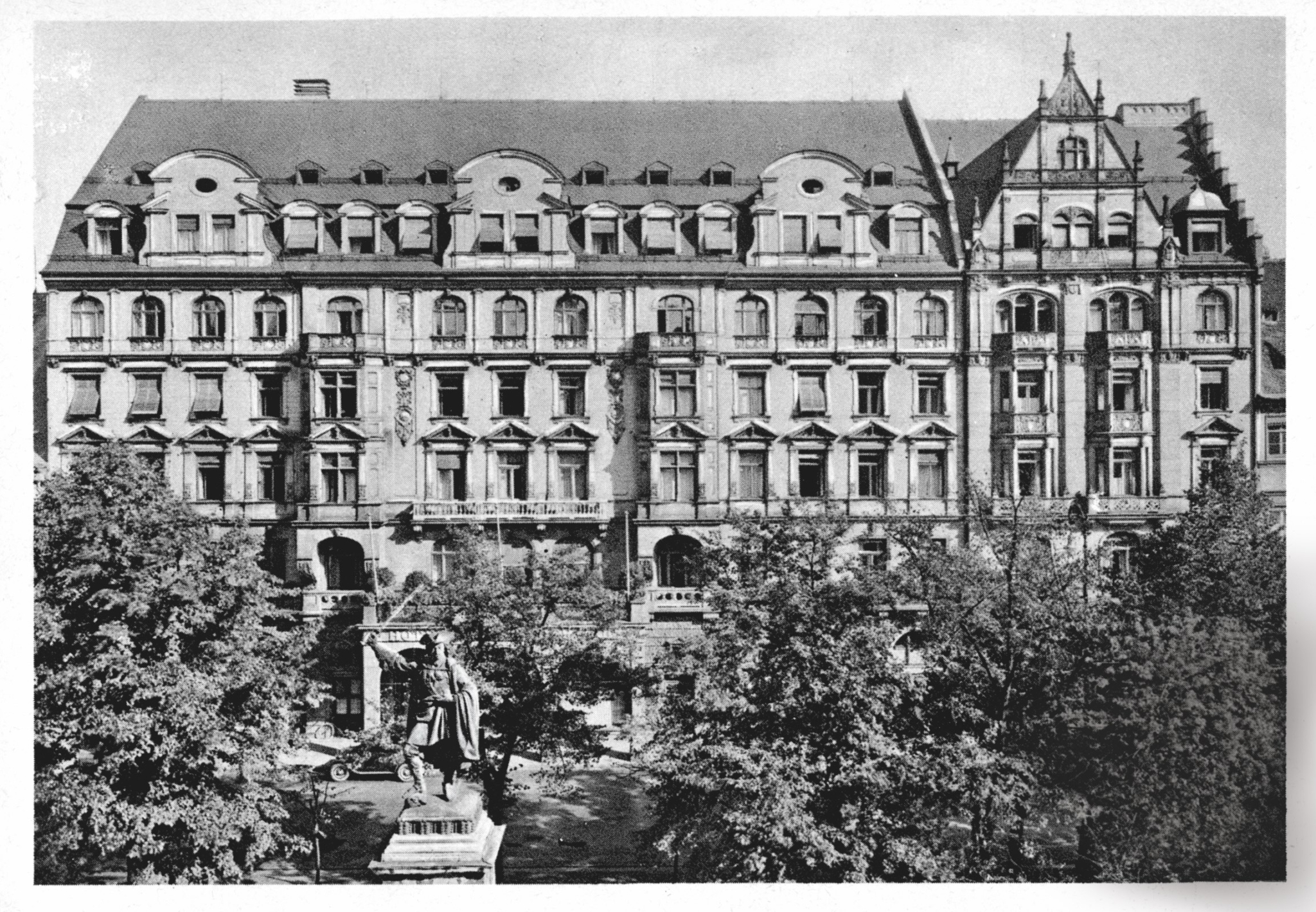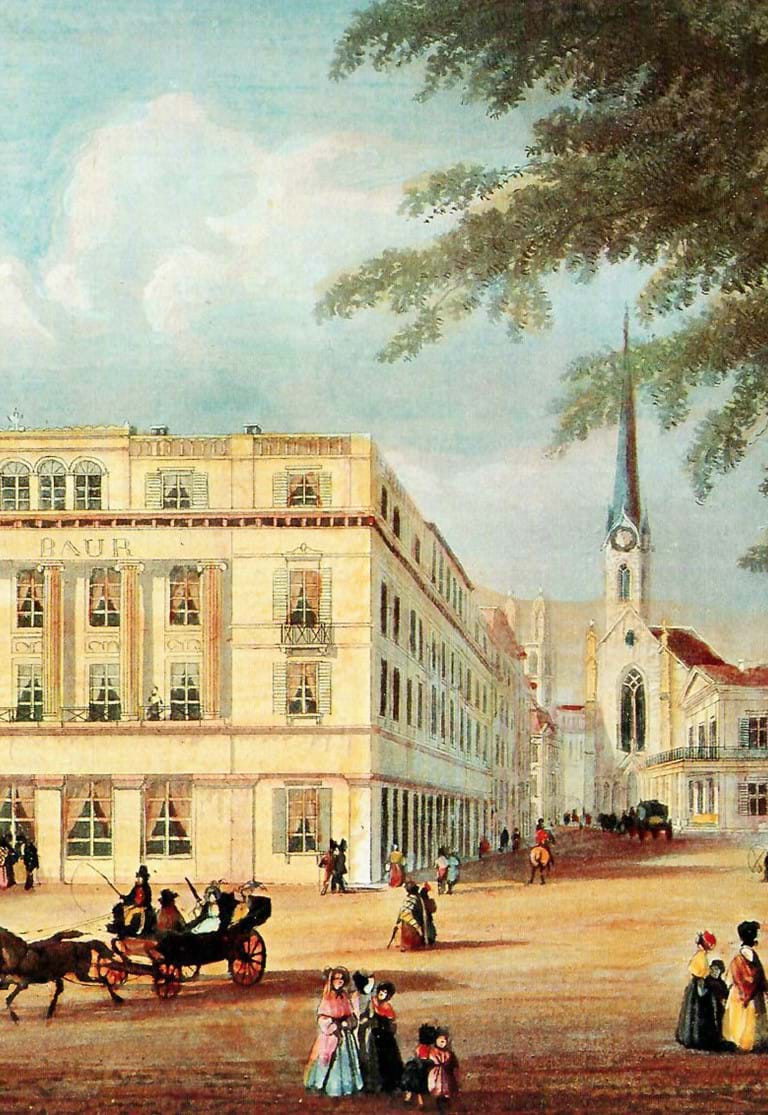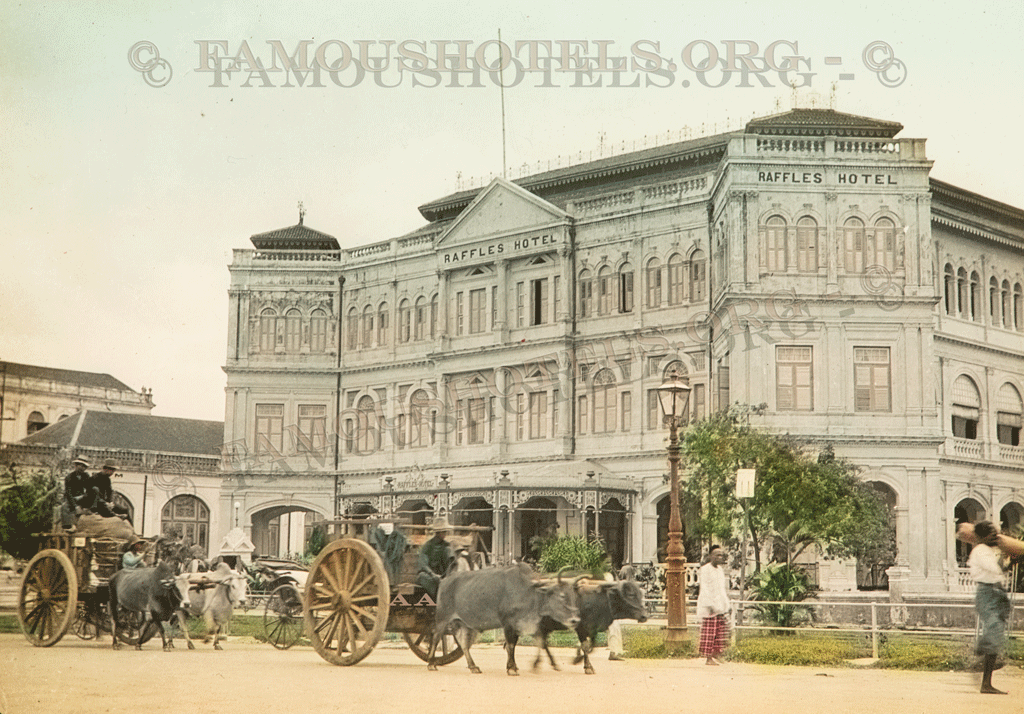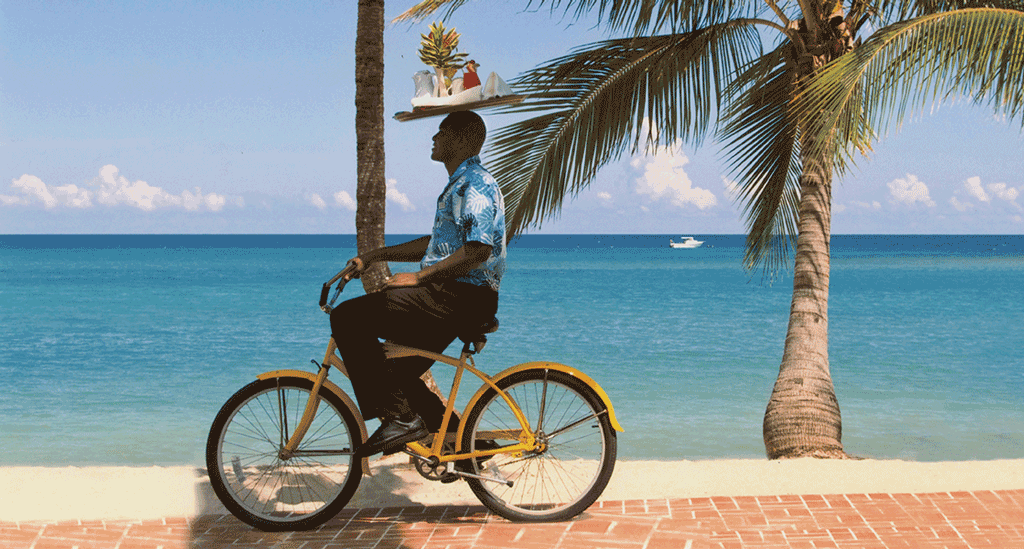The Caledonian – Edinburgh, Scotland (English Leather Edition)
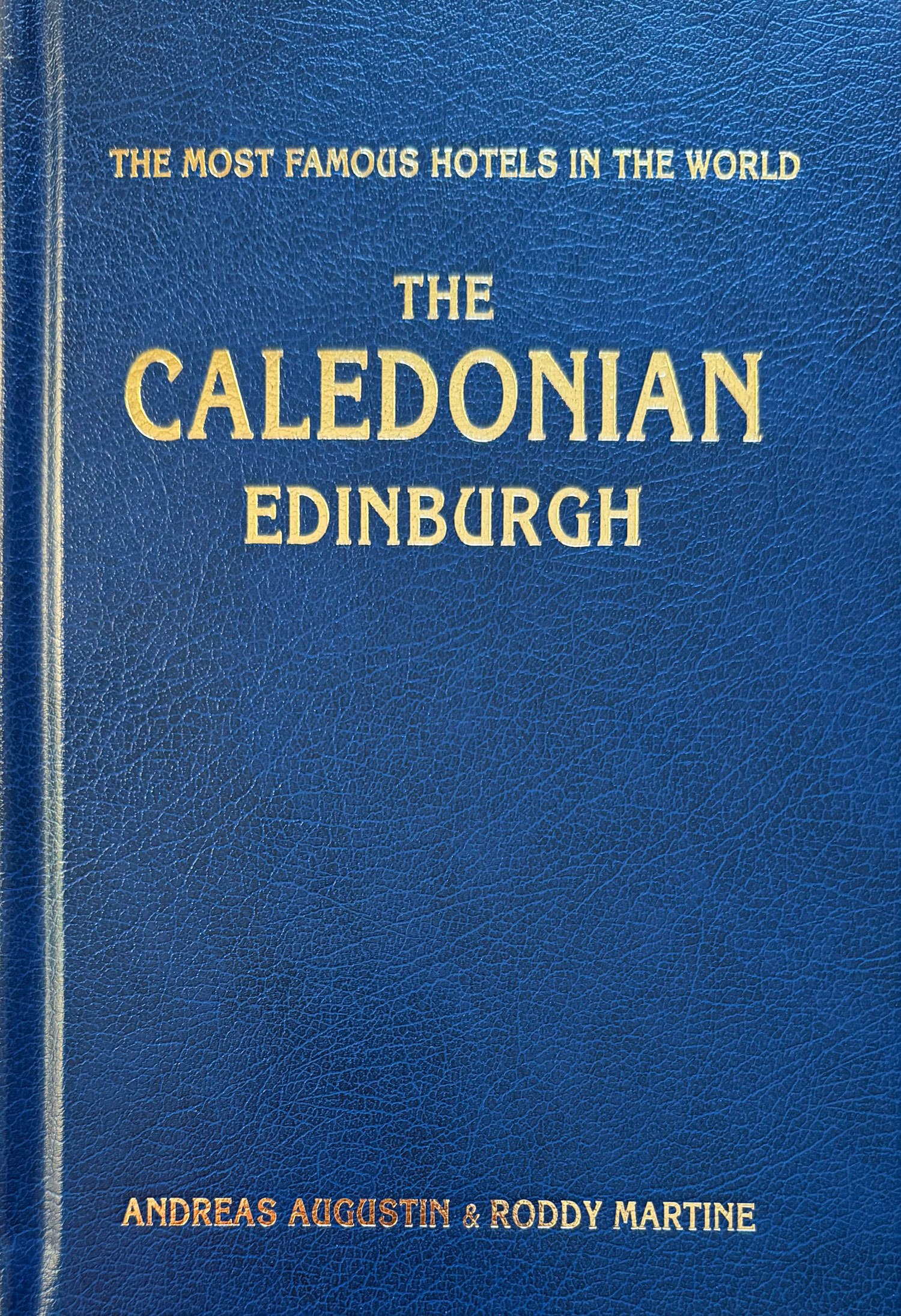
Author
Andreas Augustin and Roddy Martine
Pages
160
Photographs
Illustrations
Over 200 historic and contemporary photographs and illustrations
Leather-bound edition
Yes
Includes
2 reading marks
ISBN
3-902118-10-5
Size/Weight
155 x 235 mm, 700 g
Related Hotel
Price: € 133.00
Add to cartOnly 50 books were specially bound in fine recylcled leather, adorned with gold stamping.
Scottish historian Roddy Martine and Hotel Historian of the Year Andreas Augustin have restored and expanded the classic history of The Caledonian. The new edition carries fresh research and a few tales that had slipped through the net—from the visits of Stan Laurel and Oliver Hardy and Elizabeth Taylor to the recent Taylor Swift concerts and their curious effect on global tourism.
They approach the hotel’s past with academic care. Yet the result is anything but dusty. The authors smuggle in lively anecdotes from staff and long-standing guests—stories that deserve their place in the bar as much as in the archive.
General Manager Nitin Ramtri and Klarent Hospitality have brought the Caley back to its rightful name. They see its heritage as firm ground for the years ahead. Their stewardship ties the hotel closely to the daily life of the city.
Edinburgh stands as a cultural capital in summer and a beguiling place in every other season. The Caledonian mirrors that mood. Its story remains active, modern and very much part of today’s Edinburgh.
After checking-in at the Caledonian, I take a moment to enjoy the marvellous view over the valley across Princes Street Gardens; the old city to the right, the new city to the left. Through my window, in room 236, I can see the castle. I quickly sneak out of the ‘Caley’, as the hotel is affectionately known in Edinburgh, and cross the road. I walk down the steps into St Cuthbert’s churchyard. Suddenly the hustle and bustle of the city are far away, and I find myself steeped in the serene atmosphere of this historic graveyard. Buried here are the remains of George Meikle Kemp, who designed the Scott Monument on Princes Street, commemorating novelist Sir Walter Scott. Here, too, lies John Napier, the great mathematician, astronomer, poet and prodigious inventor. It is also the final resting place of Alexander Nasmyth (one of his paintings is shown on previous pages), artist, architect, bridge designer and inventor, and Thomas De Quincey, author and essayist. My target lies a bit further into Princes Street Gardens. I am meeting Roddy Martine, my Scottish co-author, at Ross Fountain. Architect John Dick Peddie had originally intended the fountain for the forecourt of the Caledonian Railway station. The fountain, originally designed as a centrepiece for the Paris Exhibition of 1867, still carries the maker’s name – A Durenne, Maitre des Forges, Sommevocle, Haute Marne. After the exhibition, the statue was purchased by Daniel Ross, an Edinburgh gunsmith, who intended to present it to his native city. At considerable personal cost, Ross had it shipped in 122 pieces to Leith, but when the towering montage of scantily-clad and naked young women was unveiled before the members of Edinburgh Town Council, they were horrified. It was all too suggestive and French; the sight of naked women in a railway station was too much for their prudish Victorian worthies. So the fountain ended up here, at a safe distance from the hotel. A perfect vantage point to tell the story of Edinburgh’s famous landmark.
At the occasion of the launch of the book The Caledonian Edinburgh, Andreas Augustin held this speech:
------------ Dear Lord and Lady Provost, Eric and Janice Milligan, Dear Alex Pagett, Dear Alali Larbi, Area Vice President of Scotland and Ireland Dear Ms Dagmar Muhle, My dear ladies and gentlemen, Let me too welcome you all to this cosy and very compact book launch. For all who cannot see me, you are listening to the voice of a man, who has the pleasure to take care of historic hotels. My Name is Andreas Augustin and I am representing an organisation with the modest name The Most Famous Hotels in the World. We like to see us as the keepers of hospitality history; we are in fact collecting material of every established hotel in the world and are holding the largest archives of historic material. We have published the history of over 20 hotels such as The Oriental in Bangkok or The Peninsula in Hong Kong and The Savoy in London. Currently we are working on the story of The Kämp in Helsinki, The Mena House in Cairo, The Grand and the Excelsior in Rome, to name but a few of our current duties. Only a privileged few hotels – 317, to be precise – are allowed to bear the title A Select Member of The Most Famous Hotels in the World. This title cannot be bought. It is an honour. The Caledonian always was one of them.
The fact that you all have come shows me that the magic still works. I am talking about the unrivalled charisma of a grand hotel. The appeal of such an institution, as we can call it, is sensational. If the walls could talk we would be listening day and night. The Most Famous Hotels in the World has been founded to make walls talk, to precisely research the history of a grand hotel and to help a hotel to turn its history into a powerful tool of marketing. This December this hotel will be guarding the west end of Princes Street for one hundred years. It is ‘just’ not the oldest of the two in Edinburgh; the Balmoral at the other end of Princes Street is a few months older. I am not going to tell you the story of the Caledonian, that’s all in the book and I do hope you will read it. I am going to tell you about the people who made this book – both – possible and in fact – a success.
You might say: how can he be so sure that the book is going to be a success? The answer is as easy as it is optimistic. Failure is an orphan. Success has many fathers. This one, I bet, is a success as it has lots of fathers. Gender-wise correct we would have to start with the mother. It was Dagmar Muhle who suggested producing the history of the Caley. Edinburgh Evening News columnist John Gibson suggested Roddy Martine, the author of over 20 books, to be the best man to come in – and a wonderful cooperation began. I personally was in particular delighted. We decided that we would be co-authoring this book. The duties were split in a fair manner: Roddy would do all the research, all the interviews with guests and with former members of the staff, he would collect the old photographs, browse his and all the public archives, write all of the text including the captions, mention me various times as the co-author and send everything over when it is ready. The idea behind this equal distribution of the workload was that he would be doing the first one hundred years, while I was concentrating on the rest. To make me feel even more comfortable with my responsibilities he took me around Edinburgh in his car, showed me the city and the vicinity, explained to me strange things like the Holder of a Quaich, the weird and wonderful sounding name Firth of Forth and he signed all mails to me with Yours Aye Roddy, which I only recently translated into Yours Always, after having purchased the three volumes encyclopaedia Everyday Scottish: An English Dictionary. At that time Roddy still worked on his book Supernatural Scotland. With the politeness of a patient guest I spent long evenings listening to tales of ghostly castles guarded by black stallions, of fairies and Small People on Skye, not taller than a table, and haunted graveyards. It was one of the rare surprises in life that we did not hold our meetings on the cemetery across the road. I think the reason was that the bar at the Caledonian is more fun, and most of the time not as crowded. I have learnt that modesty was a Scottish habit, because if the Scots would not be as modest as they simply are, they would be busy all the time telling the rest of us that they have given the world the bicycle, Sherlock Holmes, x-ray, pneumatic rubber ties, the telephone, a solid theory of political economics, Whisky, the separate condenser for steam engines, road surfaces, the first use of chloroform, the mineral oil industry, the discovery of the connection between electricity & magnetism, penicillin, television, radar. With the exception of Dolly the Sheep I like to ask you: where would the world stand without the Scots? All this, of course, did not go down unnoticed: Although the Scots comprise less than half a percent of the world’s population, 11 percent of all Nobel prizes have been awarded to them. I would like to give a personal Nobel Prize to the people who are working at The Caledonian. This impressive collection of bricks and mortar, glass chandeliers and woven carpets, would be a sole-less house without them. And the book would have quite a number of fathers less. They all helped tremendously in shaping this book, some of them turned up on their days off to bring in old picture material, original menus from bygone days and other pieces of memorabilia. It was a pleasure, an honour to work with them.
You see, the list of ‘fathers’ is reassuring long. Last but not least I wish to thank another father of this success, the Hilton Company. It was with the acquisition of the Waldorff Astoria in New York that Hilton, like many other hotel groups, has started to safe the life of various historic hotels around the world. In London, they have recently taken over the management of the legendary Railway Hotel The Great Western Royal in Paddington and for much longer they are preserving the wonderful Langham, London’s oldest historic grand hotel. The general manager of this hotel, Armin Schroecker, sends his best wishes for today’s jubilee, by the way. Preservation is the right word, if we agree that we have to guard the fire, not the ashes. Constant renovation is part of this concept; new amenities must be added all the times, as hotels were always creative forerunners for innovative ideas. Today it is wireless Internet access in the lounge downstairs, and one day the hotel business might even be able to solve the industry’s greatest challenge and have room service deliver a breakfast egg that’s not over- or undercooked. Finally I wish to thank you, dear ladies and gentlemen. It is you, the guest, who makes all this possible. Let us all work together to keep the legends alive by constantly challenging these grand old ladies of hospitality to remain what they are: Grand Hotels. Thank you.
Andreas Augustin
presents
The Caledonian Edinburgh
in the series The Most Famous Hotels in the World™
We would like to especially thank Dagmar Mühle, general manager of the Caledonian Hilton Edinburgh. She was the driving force behind this ‘centennial project’.
It must be noted with greatest respect that the management of the hotel decided to accept historical facts rather than old legends and traditionally distributed myth.
We are in particular indebted to all former and current members of the staff, who contributed so generously to this book.
We would also like to thank Fiona Blair, Sarah Callaghan, Brydon Cunningham, John Dillon, Jorge Figuerola, Billy Garioch, Terry Gaughan, Selim Gecit, John Gibson, Gaynor Gillespie, Ann Graham, Ian Haggart, Marion Harvey, Jack Herkes, Margaret Jardine, Henry Klar, Ian Kruger, Moira Leggate, Jim Lindsay, David Lumsden, the Rt Hon Eric Milligan, David Nicol, Michael and Caroline Pearson, Andrew Penker, Mary Redden, Jimmy Reilly, Ena Robb, Stewart Scoular, Adrian Shaw, Andrew Smith, Helen Smith, A J Stewart, Eric Thorburn, Heather Warner, Rick Wilson and all the others who are not mentioned here by name.
Photographs: Archives of the Hotel, Famous Hotels Main Archives, Roddy Martine Collection, National Galleries of Scotland, The City Art Centre and the Hilton Creative Library. In a few cases we were unable to identify the copyright owner. Please contact us.
DTP Assistance: HC Artwoman Production: Harrison Dolittle
Editor: Francesca Brizi
All historic data have been carefully selected during research with the objective of providing a general historical overview. This work does not therefore claim to be complete. Historic photographs have been restored as necessary, and are therefore subject to copyright. The entire work, including such parts as the dust jacket, the enclosed postcards and bookmarks, are also subject to copyright.
Any form of storage using electronic media or distribution via a network is prohibited. Any reproduction of excerpts from this work without the explicit written consent of The Most Famous Hotels in the World™ will be prosecuted.
Note for publishers and authors
All the photographs used in this book are available as high-quality digital files. Please contact the archives of The Most Famous Hotels in the World (archives@famoushotels.org) and ask for these illustrations for your own publications. We will be happy to provide them for you.
© Copyright The Most Famous Hotels in the World™

